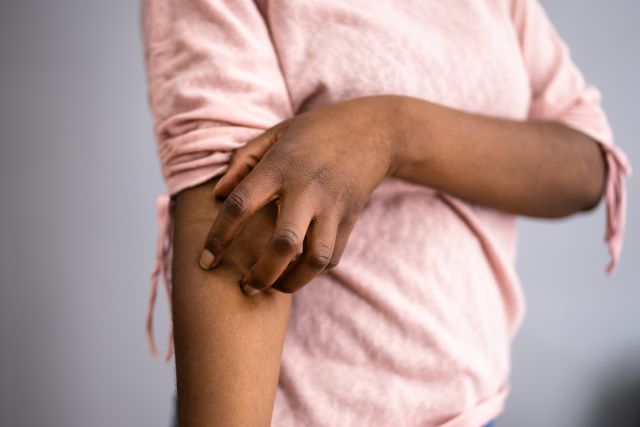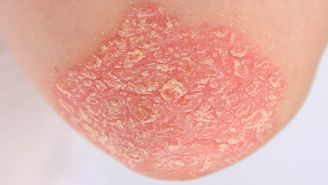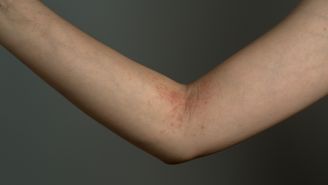Prurigo nodularis is a skin disorder characterized by a skin rash consisting of hard, itchy lesions on the skin. These lesions often appear on the arms, legs, and trunk of the body. Itching is often intense and distressing.
What do symptoms look like?
The severity of prurigo nodularis varies from one person to the next. Some people have only a few lesions, while others have hundreds. Lesions typically affect the body in a symmetrical pattern—this means that if a person has lesions on one side of the body, they typically have lesions on the other side as well.
Lesions can vary in appearance. Nodules are larger lesions that extend into the deeper layers of the skin. Papules are smaller and found in the top layer of the skin. Plaques are wide, elevated lesions on the surface of the skin. Lesions can also vary in color—they can be the color of the surrounding skin, they can be reddened or pink, or they can be brown or black. Prurigo nodularis can also cause lasting damage to the skin—the skin can become thickened, lesions can become infected, and healed lesions can leave scars.
What causes prurigo nodularis?
The exact cause of prurigo nodularis is unknown, and research has not yet been able to identify why some people develop prurigo nodularis and others do not. Lesions are believed to be the result of repeated, intense scratching—in other words, the intense itching occurs first and the lesions form in response.
Prurigo nodularis is associated with other health conditions, including atopic dermatitis and contact dermatitis, skin conditions that cause itching. There are also accounts of prurigo nodularis occurring in people who have diabetes, hepatitis C, untreated HIV, diabetes, lymphoma, thyroid disease, and end-stage kidney disease.
It is more common in people between the ages of 51 and 65, and more common in Black people with uncontrolled atopic dermatitis. However, prurigo nodularis also affects plenty of people who do not have any of these associated conditions or risk factors.
How is prurigo nodularis treated?
As mentioned above, there is no cure for prurigo nodularis, and treatment focuses on treating itch, letting the skin heal, and addressing any complications caused by skin lesions, such as infections or scarring. A treatment plan may include:
- Treating and addressing any underlying health conditions
- Identifying and avoiding triggers that cause the skin to itch
- Steps to prevent scratching or damage from scratching, such as keeping skin moisturized and keeping fingernails clipped short
- Topical medications that relieve itch
- Topical medications that reduce inflammation
- Medications that act on the immune system
- Phototherapy, also known as UV light therapy
- Cryosurgery, a type of surgery that involves freezing nodules
Mental health is also an important focus of treatment. Prurigo nodularis is associated with anxiety and depression, severe itching can cause high levels of emotional distress, and the appearance of the skin can be harmful to a person's self-esteem, confidence, and mental health.







